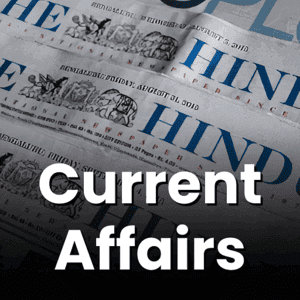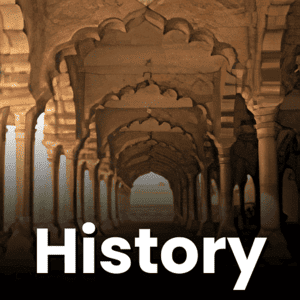UPSC Daily Current Affairs: 17th January 2025 | Current Affairs & Hindu Analysis: Daily, Weekly & Monthly PDF Download
GS2/International Relations
An Alliance of Democracies with India at its Core
Source: The Hindu
 Why in News?
Why in News?There is a growing recognition that Europe and India require a stronger and more practical partnership. Together with the United States, they can form a formidable alliance to address global challenges and counter authoritarianism.
- Democracies can unite against authoritarian regimes to reinforce global stability.
- A collective alliance can promote democratic values and support vulnerable nations.
- Collaborative efforts can effectively tackle global challenges like climate change and terrorism.
- Economic cooperation can enhance trade and reduce dependency on non-democratic states.
- Sharing best practices can strengthen democratic resilience among nations.
Additional Details
- Unified Front Against Authoritarianism: By standing together, democracies can deter threats from authoritarian regimes such as China and Russia.
- Advocating Democratic Principles: An alliance provides a platform to promote human rights and the rule of law, fostering a supportive environment for democracy.
- Addressing Global Challenges: Democracies can collaborate on issues like climate change and public health crises, pooling resources for effective solutions.
- Strengthening Economic Ties: Enhanced cooperation can promote free trade and create a resilient economic network.
- Bolstering Democratic Resilience: Sharing best practices helps democracies strengthen institutions and address internal polarization.
India plays a strategic role in this alliance due to its geopolitical significance and shared democratic values with Europe. Its contributions can enhance the promotion and protection of democratic norms internationally, although challenges remain, including balancing relations with Russia and China, addressing internal democratic issues, and progressing in trade negotiations.
GS3/Science and Technology
150 Years of the India Meteorological Department (IMD)
Source: PIB
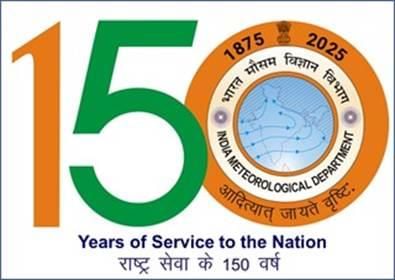 Why in News?
Why in News?The India Meteorological Department (IMD) is commemorating its 150th anniversary on January 15, 2025, marking a significant milestone in its history of weather forecasting and meteorological services.
- The IMD has enhanced its forecasting capabilities significantly over the years.
- It aims to transition from traditional weather forecasting to comprehensive weather management strategies.
- Future objectives include achieving zero-error forecasts and improving accuracy in weather predictions.
Additional Details
- About IMD: The IMD is a vital government agency responsible for weather forecasting, seismology, and meteorological observations since its establishment in 1875, headquartered in New Delhi.
- Mandate: The IMD's core responsibilities include taking meteorological observations, providing weather forecasts, issuing severe weather warnings, and engaging in research.
- Enhanced Observation Network (2014-2024): The IMD has significantly expanded its observation infrastructure, including:
- Doppler Weather Radars: Increased from 15 to 39.
- Automatic Weather Stations: Increased from 675 to 1,208.
- High Wind Speed Recorders: Increased from 19 to 37.
- Rainfall Monitoring Stations: Increased from 3,995 to 6,095.
- Improved Accuracy: Key advancements in forecasting accuracy include:
- Heatwave Prediction: 95% accuracy for two-day forecasts (up from 50% in 2014).
- Thunderstorm Detection: Improved hourly detection accuracy to 86% (from 50% in 2017).
- Heavy Rainfall Prediction: Accuracy for three-day forecasts increased to 78% (from 50% a decade ago).
- Cyclone Track Prediction: Accuracy improved by 35-40%, resulting in zero human fatalities.
- Vision Document 2047: This long-term plan aims to make India climate-smart and weather-ready by the centenary of independence, with specific accuracy targets for weather forecasts.
The India Meteorological Department's commitment to improving its capabilities and transitioning to a more proactive role in weather management underscores its importance in safeguarding lives and livelihoods against severe weather events.
GS3/Defence & Security
Siachen Glacier
Source: The Hindu
Why in News?
Recently, the Siachen Glacier was equipped with advanced 4G and 5G telecommunications services by a private telecom firm in India, enhancing connectivity in this remote and strategic location.
- Siachen Glacier is a prominent piedmont glacier located in the Karakoram Range.
- It is referred to as the "Third Pole" due to its significant volume of fresh water, more than found in any location except for polar ice caps.
- It serves as the second longest nonpolar glacier in the world, following the Fedchenko Glacier in Tajikistan.
- The glacier plays a crucial role in the geography of the region, dominating several valleys and routes.
Additional Details
- Geographical Importance: Siachen Glacier is strategically located between the Saltoro Ridge to the west and the main Karakoram Range to the east, controlling routes from Gilgit Baltistan to Leh.
- Hydrological Significance: It is the primary source of the Nubra River, which is an important tributary of the Shyok River.
- Military Significance: Known as the world's highest battleground, India gained control of Siachen Glacier in 1984 through Operation Meghadoot.
- The glacier's strategic location also allows it to oversee the ancient Karakoram Pass on its eastern side.
The Siachen Glacier not only holds ecological and hydrological importance but also plays a vital role in the geopolitical landscape of the region, making it a significant area of interest for both military and environmental studies.
GS3/Economy
Causes, Implications and Policy Challenges of the Devaluation of the Indian Rupee
Source: The Hindu
Why in News?
The Indian rupee has experienced a significant decline in value against the US dollar, following a phase of relative stability that emerged after the COVID-19 pandemic. This article explores India's exchange rate policies, the underlying structural challenges within its economy, and the broader consequences of the rupee's depreciation.
- The nominal exchange rate differs from the real exchange rate in that the latter accounts for inflation.
- India has mainly adhered to a managed-float exchange rate regime for the past 30 years.
- Recent depreciation of the rupee highlights ongoing structural vulnerabilities in the Indian economy.
Additional Details
- Exchange Rate Regimes: The nominal exchange rate refers to the official rate not adjusted for inflation, while the real exchange rate is adjusted for inflation. Key determinants include:
- Current Account: Influenced by net exports.
- Capital Account: Driven by foreign investment flows, increasing demand for foreign currency with a higher current account deficit.
- Types of Exchange Rate Regimes:
- Fixed Exchange Rate: Managed by the central bank to maintain a constant rate.
- Floating Exchange Rate: Determined by market forces without central bank intervention.
- Managed-Floating Exchange Rate: A combination of market forces and central bank actions.
- India's exchange rate policy has evolved, with the Reserve Bank of India (RBI) managing the rupee asymmetrically, particularly during periods of excess demand and supply.
- Recent trends indicate a shift back to a managed-float approach, influenced by capital outflows and rising import costs due to high crude oil prices.
The devaluation of the rupee has both positive and negative implications. On the positive side, it can boost exports by making domestic goods cheaper, enhancing competitiveness. However, it also introduces inflationary pressures, increasing import costs and reducing consumers' purchasing power as businesses transfer higher costs to them.
Structural Constraints in the Indian Economy
- Divergence between NEER and REER: The nominal effective exchange rate (NEER) has depreciated while the real effective exchange rate (REER) has appreciated since the mid-2010s, which undermines export competitiveness.
- Rising Markups: Non-financial firms have raised markups, leading to increased domestic price inflation due to higher costs of raw materials, labor, fuel, and indirect taxes.
Policy Questions and Challenges
- Policy Dilemmas: Should India revert to the managed-float regime of the past or adopt a new approach? How can inflationary pressures be managed while maintaining export competitiveness?
- RBI’s Role: Recent policy changes by the RBI indicate the need for a cohesive exchange rate strategy with clear objectives and consistent communication to address ongoing challenges.
In conclusion, the recent devaluation of the Indian rupee highlights significant structural vulnerabilities within the economy and raises essential questions regarding the future of exchange rate policy. An effective strategy that balances inflation control with the enhancement of export growth is critical for achieving sustainable economic recovery.
GS3/Science and Technology
Intravenous Fluids (IV Fluids)
Source: The Hindu
 Why in News?
Why in News?The West Bengal government has recently suspended 12 doctors due to "medical negligence" after the tragic deaths of a woman and her newborn, allegedly caused by the administration of expired intravenous fluids at Medinipur Medical College and Hospital.
- IV fluids are essential for preventing or treating dehydration.
- They are administered to individuals of all ages including those who are sick, injured, dehydrated, or undergoing surgery.
- Intravenous rehydration is generally a safe procedure with low risks of complications.
Additional Details
- Types of IV Fluids:
- Crystalloid Solutions:These are the most common IV fluids containing small, dissolved molecules that easily pass from the bloodstream into tissues and cells. Examples include:
- Normal saline (salt in water)
- D5W (dextrose in water)
- Lactated Ringer's solution, which contains sodium, chloride, calcium, and lactate, used for aggressive fluid replacement.
- Colloid Solutions: These contain larger molecules that do not easily pass through cell membranes, allowing them to remain in the blood vessels. Examples include albumin and hetastarch.
- Crystalloid Solutions:These are the most common IV fluids containing small, dissolved molecules that easily pass from the bloodstream into tissues and cells. Examples include:
- IV fluids can often allow multiple types of fluids to be administered simultaneously into the same location.
Overall, the use of IV fluids is crucial in medical treatments, and their proper administration is vital to prevent adverse outcomes such as those recently reported.
GS3/Defence & Security
Bharat Ranbhoomi Darshan
Source: Indian Express
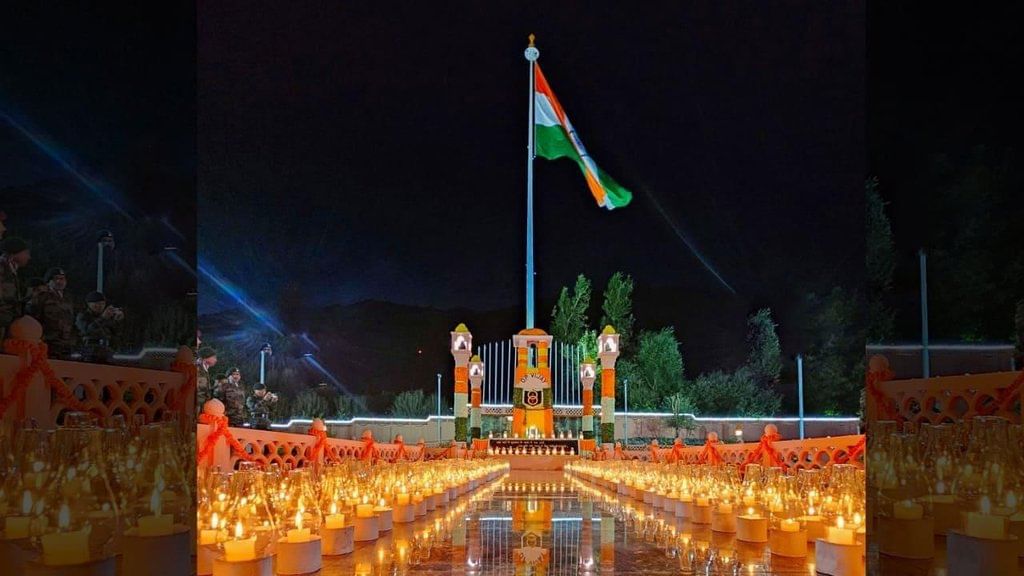 Why in News?
Why in News?Recently, the "Bharat Ranbhoomi Darshan" app was launched by the Defence Minister in conjunction with the Army Day celebrations. This initiative is designed to give citizens unprecedented access to India's rich wartime history.
- The app is developed by the Ministry of Defence in collaboration with the Ministry of Tourism.
- It aims to promote connectivity, tourism, and socio-economic development in border regions.
- The Indian Army is working alongside local civil authorities to ensure operational readiness while promoting tourism.
Additional Details
- Features: The app provides information about various battlefields and border areas, including virtual tours, historical narratives, and interactive content.
- The Tourism Ministry will promote these sites under the Incredible India campaign.
- The app serves as a one-stop destination for visitors to plan their travels, including applying for permits for certain restricted areas.
- Selected Sites:The Indian Army and the Ministry of Tourism have identified significant sites for "battlefield tourism," including:
- Galwan Valley in Ladakh
- Doklam, the tri-junction of India, Bhutan, and China
- 75 other forward sites along borders with China (Line of Actual Control) and Pakistan (Line of Control).
- Historical engagements such as the 1962 war with China and the 1971 India-Pakistan war, particularly the Battle of Longewala, are highlighted.
- These previously restricted sites will now provide visitors with insights into the experiences of soldiers in these challenging terrains.
The launch of the "Bharat Ranbhoomi Darshan" app marks a significant step towards enhancing public awareness about India's military history and promoting tourism in strategically important areas.
GS3/Environment
 |
Download the notes
UPSC Daily Current Affairs: 17th January 2025
|
Download as PDF |
Pench Tiger Reserve (PTR)
Source: Times of India
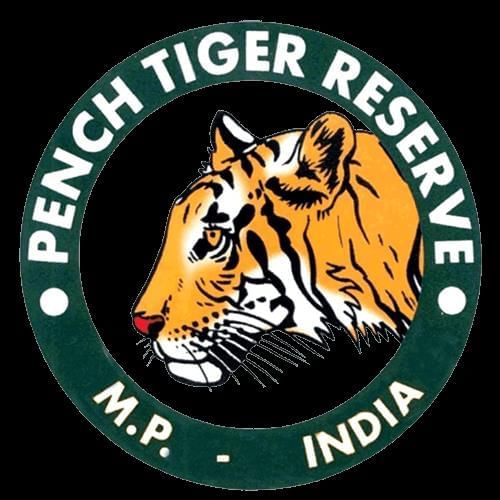 Why in News?
Why in News?Recently, the Income Tax Department uncovered benami transactions involving resorts within the Pench Tiger Reserve, which is famously known as the ‘Land of Jungle Book’s Mowgli.’
- Pench Tiger Reserve is located in the southern reaches of the Satpura hills, spanning the Seoni and Chhindwara districts in Madhya Pradesh.
- It was declared a National Park in 1983 and later designated as a tiger reserve in 1992.
- The reserve covers an area of 1,180 sq.km, including a buffer zone of 768 sq.km.
- It is named after the meandering Pench River, which flows through the reserve.
Additional Details
- Components of PTR: The reserve includes the Indira Priyadarshini Pench National Park, the Pench Mowgli Sanctuary, and a buffer area.
- Literary Significance: The area is notably recognized as the setting for Rudyard Kipling's famous work, "The Jungle Book."
- Vegetation: The diverse topography supports a variety of vegetation types, ranging from moist sheltered valleys to open dry deciduous forests.
- Flora: The reserve features a rich array of plant life, including teak, saag, mahua, and various grasses and shrubs. Approximately one quarter of the area is covered by teak forests, and there are bamboo plantations near water banks.
- Fauna: The reserve is home to large herds of Chital, Sambar, Nilgai, Gaur (Indian Bison), and wild boar. The primary predator is the tiger, followed by the leopard, wild dogs, and wolves.
- Over 325 species of resident and migratory birds can be found in the area, including the Malabar Pied Hornbill, Indian Pitta, Osprey, and Grey Headed Fishing Eagle.
The Pench Tiger Reserve thus stands out not only for its ecological diversity but also for its cultural significance, being a vital habitat for numerous species and a cherished literary landmark.
GS2/Polity
New Fast-Track Immigration for Indians
Source: Indian Express
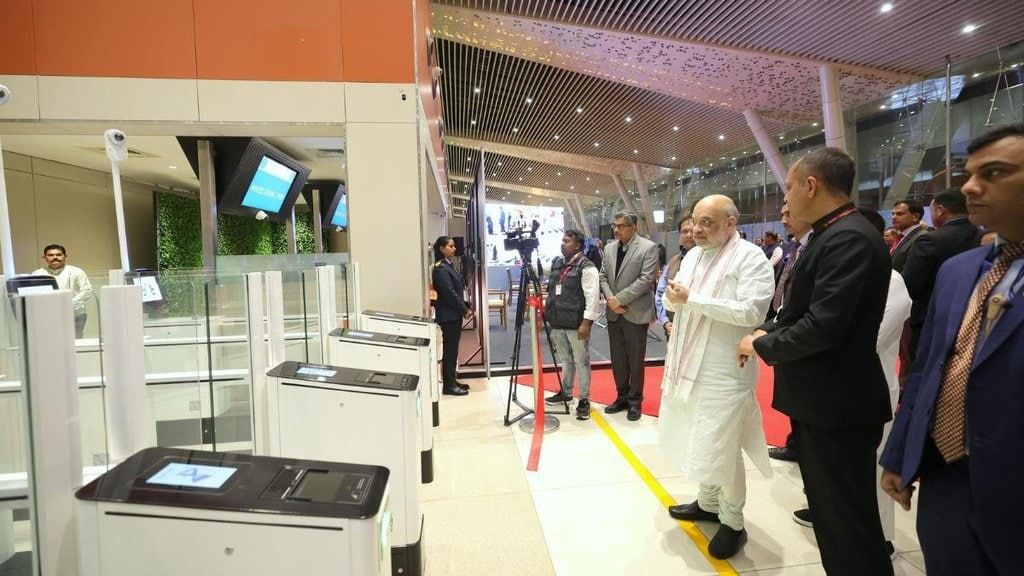 Why in News?
Why in News?The Union Home Minister Amit Shah inaugurated the Fast Track Immigration – Trusted Traveller Programme (FTI-TTP) on January 16, starting from Ahmedabad. This program was initially launched at Delhi’s IGI Airport seven months prior and aims to simplify and secure international travel for Indian nationals and Overseas Citizens of India (OCI).
- The FTI-TTP was launched to provide accelerated immigration pathways at seven major airports across India.
- It aligns with the 'Viksit Bharat @2047' vision for India to become a developed nation by its centenary of independence.
Additional Details
- Launch and Objectives: The FTI-TTP was first introduced in June 2024 at IGI Airport Terminal 3. It facilitates faster and more secure immigration clearance for Indian nationals and OCI passengers arriving from abroad.
- Key Features: Initially offered free of cost for Indian nationals and OCI cardholders, the program focuses on enhancing international mobility through automated and streamlined immigration processes.
- Implementation: The Bureau of Immigration under the Ministry of Home Affairs is responsible for executing the program.
- Enrollment Process: Applicants can register online via the portal (ftittp.mha.gov.in). Details and documents are uploaded for verification, and approved applicants are added to the 'Trusted Travellers' whitelist for using e-gates.
- Biometric Verification: Biometrics are captured at the Foreigners Registration Office (FRRO) or during airport passage, with registration valid until the passport expires or for five years, whichever comes first, and an option for renewal.
- Immigration Clearance Process: Registered travellers scan their boarding pass and passport at e-gates for identity confirmation, followed by biometric authentication, allowing for automated immigration clearance.
- Implementation Phases: Phase 1 covers Indian citizens and OCI cardholders at seven airports, while Phase 2 will expand coverage to foreign travellers across 21 major airports nationwide.
Global Fast-Track Immigration Programmes
- United States: Global Entry Programme (2008) - Offers expedited clearance for pre-approved low-risk travellers with self-service kiosks for passport and fingerprint scans at designated airports.
- United Kingdom: Registered Traveller Service (2015) - Targets frequent visitors from specific countries, including India, allowing use of eGates or fast-track channels at major UK airports.
- European Union: Smart Borders Initiative (2016) - Modernises border checks for non-EU nationals entering the Schengen Area using the Entry/Exit System (EES) to pre-register traveller data.
- Australia: SmartGate System (2007) - Streamlines immigration for eligible travellers with automated kiosks that verify identity through passport scans and photographs.
- Saudi Arabia: Smart Travel System (2019) - Utilises automated e-gates for faster immigration clearance for Saudi nationals and select foreign travellers.
The FTI-TTP is a significant step toward enhancing international travel efficiency for Indian citizens, aligning with global standards and initiatives to facilitate smoother immigration processes.
GS2/International Relations
African Leaders Adopt New Kampala Declaration
Source: DTE
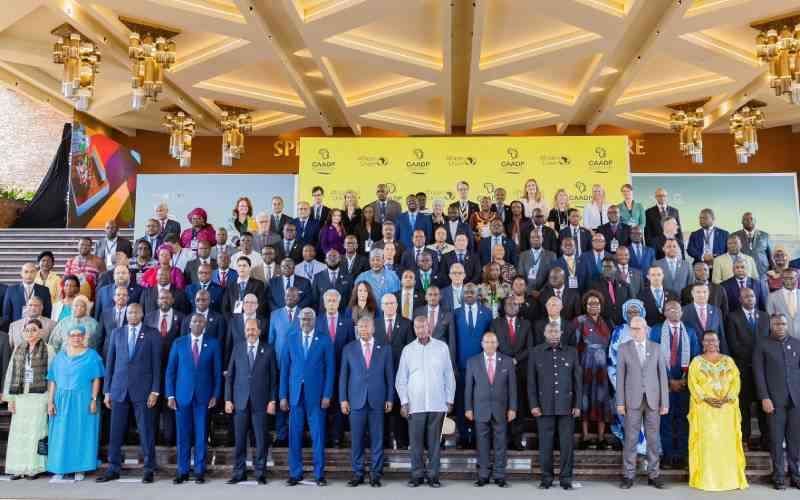 Why in News?
Why in News?The Extraordinary African Union Summit on the Comprehensive Africa Agriculture Development Program (CAADP) recently concluded in Kampala, Uganda, culminating in the adoption of the transformative Kampala Declaration.
- The Kampala Declaration serves as a successor to the Malabo Declaration (2014–2025).
- It focuses on modernizing agriculture into a climate-smart sector.
- The declaration aligns with CAADP’s vision and the African Union’s Agenda 2063.
Additional Details
- Ten-Year Post-Malabo Agenda (2026–2035): This agenda includes strategies for implementation and monitoring.
- Climate-Smart Innovations: The declaration promotes sustainable food production through innovative practices.
- Integration with Broader Development Goals: It emphasizes the link between agricultural policies and objectives like nutrition and environmental sustainability.
- Global Challenges Acknowledged: The declaration recognizes issues such as COVID-19 and geopolitical disruptions.
- Agri-Food Systems Approach: It addresses challenges throughout the food value chain.
- Resilience Building: It aims to enhance resilience against climate, economic, and geopolitical shocks.
- Stakeholder Involvement: The declaration ensures the inclusion of diverse stakeholders, including policymakers, farmers, and private sector actors.
- Monitoring Frameworks: Establishes systems for accountability and progress tracking.
The Kampala Declaration marks a significant step towards transforming Africa's agriculture, ensuring it meets modern challenges while promoting sustainability and inclusivity.
GS3/Economy
McKinsey Report on Demographic Transition and Depopulation
Source: Economic Times
Why in News?
The recent report titled, ‘Dependency and Depopulation? Confronting the Consequences of a New Demographic Reality’, published by the McKinsey Global Institute, offers an extensive comparative analysis of demographic trends across both developed and developing nations.
- Two-thirds of the global population now resides in countries with fertility rates below the replacement level of 2.1 children per family.
- Age demographics are shifting from pyramid structures to obelisk forms, indicating an increasing elderly population and a decreasing youth demographic.
- Projections suggest that populations in several major economies may decline by 20%-50% by the year 2100.
- The global support ratio, which measures the number of working-age individuals per senior citizen (aged 65 and older), is expected to decrease from 6.5 today to 3.9 by 2050.
- In India, the support ratio is forecasted to drop from 10 workers per senior in 1997 to 4.6 in 2050 and further to 1.9 by 2100, mirroring current levels in Japan.
Additional Details
- Consumption Patterns in India: India’s share of global consumption is anticipated to rise from 9% today to 16% by 2050, while the shares from advanced economies are expected to remain stagnant or decline.
- By 2050, the consumption share among seniors aged 50 and older is projected to increase from 8% to 15%.
- The percentage of hours worked by seniors is expected to grow from 2.9% to 5.4% by 2050 based on current trends.
- India’s Diminishing Demographic Dividend: India has 33 years to fully utilize its demographic dividend before its support ratios align with those of developed countries.
- Between 1997 and 2023, favorable demographics contributed 0.7 percentage points per year to India's GDP per capita growth, a figure projected to decrease to 0.2 percentage points per year through 2050 as the population ages.
- India's support ratio, which measures the number of working-age individuals per senior, is declining, indicating a growing dependency on fewer workers. By 2050, it will fall to 4.6 workers per senior, down from the current level.
- India's productivity is currently at $9 per hour, significantly lower than the $60 per hour average in high-income nations, highlighting the need for economic progress to achieve the goal of “getting rich before it gets old.”
In conclusion, the McKinsey report highlights critical demographic shifts and economic challenges that need to be addressed to sustain growth and support aging populations effectively.
|
39 videos|4560 docs|976 tests
|
FAQs on UPSC Daily Current Affairs: 17th January 2025 - Current Affairs & Hindu Analysis: Daily, Weekly & Monthly
| 1. What is the significance of the India Meteorological Department (IMD) in India's weather forecasting? |  |
| 2. What are the environmental and geopolitical implications of the Siachen Glacier conflict? |  |
| 3. How does the devaluation of the Indian Rupee impact the Indian economy? |  |
| 4. What are the benefits of the new fast-track immigration process for Indians? |  |
| 5. What is the Kampala Declaration, and how does it affect African leadership? |  |



